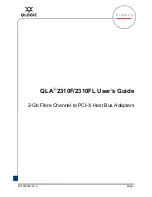
19
Gateway:
a device that interconnects networks with different, incompatible
communication protocols.
HEX:
Hexadecimal, HEX, consists of numbers from 0 – 9 and letters from A – F.
IEEE:
The
I
nstitute of
E
lectrical and
E
lectronics
E
ngineers, which is the largest
technical professional society that promotes the development and application of
electrotechnology and allied sciences for the benefit of humanity, the
advancement of the profession. The IEEE fosters the development of standards
that often become national and international standards.
Infrastructure:
An infrastructure network is a wireless network or other small
network in which the wireless network devices are made a part of the network
through the Access Point which connects them to the rest of the network.
ISM Band:
The FCC and their counterparts outside of the U.S. have set aside
bandwidth for unlicensed use in the ISM (Industrial, Scientific and Medical) band.
Spectrum in the vicinity of 2.4GHz, in particular, is being made available
worldwide.
MAC Address:
Media Access Control Address is a unique hex number
assigned by the manufacturer to any Ethernet networking device, such as a
network adapter, that allows the network to identify it at the hardware level.
Multicasting:
Sending data to a group of nodes instead of a single destination.
Multiple Bridge
– One of the additional AP operating modes offered by 54Mbps
Access Point, which allows a group of APs that consists of two or more APs to
connect two or more Ethernet networks or Ethernet enabled clients together.
The way that multiple bridge setups is based on the topology of Ad-Hoc mode.
Node:
A network junction or connection point, typically a computer or
workstation.
Packet:
A unit of data routed between an origin and a destination in a network.
PLCP:
Physical layer convergence protocol
PPDU:
PLCP protocol data unit





































